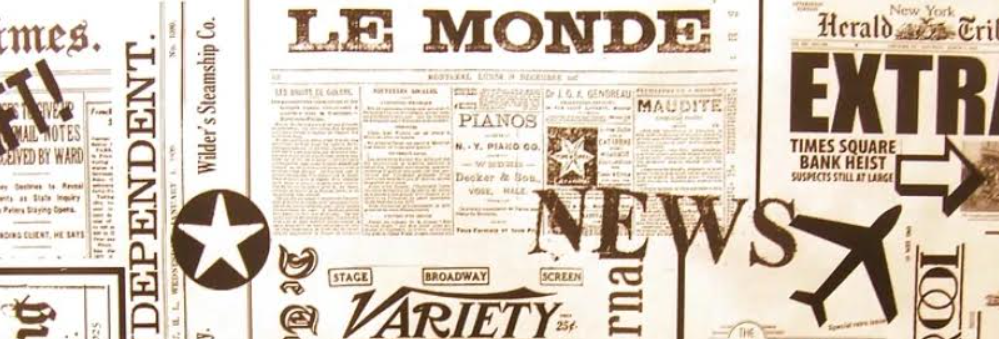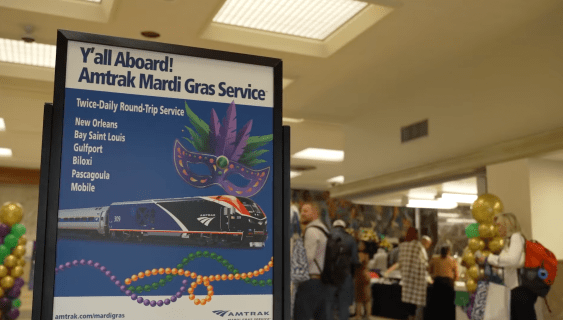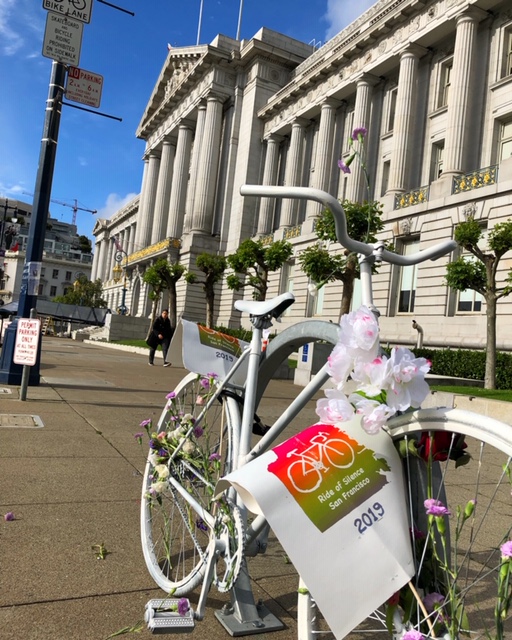At its regular meeting Tuesday, SFMTA approved an eastbound, parking-protected bike lane on Oak Street from Golden Gate Park to Baker Street. The 0.8-mile project should finish construction in the summer of 2026.
"With more San Franciscans biking and rolling every day, better east-west connectivity on Oak Street is crucial to improving safety for everyone traveling through the Panhandle, not just for people on bikes—and will help transform the neighborhood into a more livable space," wrote Rachel Clyde, westside community organizer for the San Francisco Bicycle Coalition, in an email to Streetsblog. "SFBike is grateful to former Supervisor Preston for pushing this project forward for years, and also to current Supervisor Mahmood for jumping in to champion this project so we could continue without a hitch."
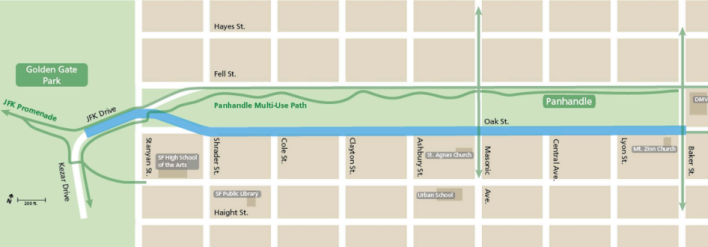
However, others were concerned that there is a hitch, just west of the intersection with Masonic.
"The proposed design diverts people on bikes—unnecessarily—into the Panhandle Park," wrote StreetsForward's Luke Bornheimer, in an email to Streetsblog, adding that the diversion introduces a safety issue (see diagram below).
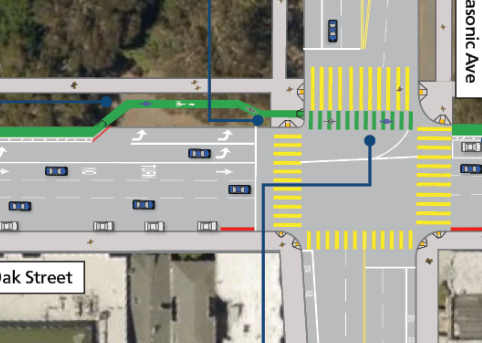
This jog into the Panhandle Park was added, according to SFMTA, to make room for a second left-turn pocket for cars from Oak onto the northbound side of Masonic. "The second left-turn ‘pocket’ lane approaching the Oak and Masonic intersection is intended to keep traffic moving," wrote SFMTA's Michael Roccaforte.
"Seeing a new double left turn design after the horrendous fatality in SOMA definitely gave us pause," wrote Robin Kutner, an advocate with the North of the Panhandle Neighborhood Association. "But it's a notable distinction that the tragedy in SOMA occurred when the right-turning drivers had a green light while pedestrians had a white signal. In this new Oak design, drivers in the left-turn lanes will have a red arrow while pedestrians have a white signal. That pedestrian-only phase was a non-negotiable project component for us."
The fatality in SOMA Kutner refers to took place in 2023 when a right-turning driver using a two-lane turning pocket ran over a small child in a stroller. SFMTA removed the second turning lane from this location and former Mayor London Breed instructed the city to review all two-lane turning pockets, with an eye on removing many of them throughout the city.
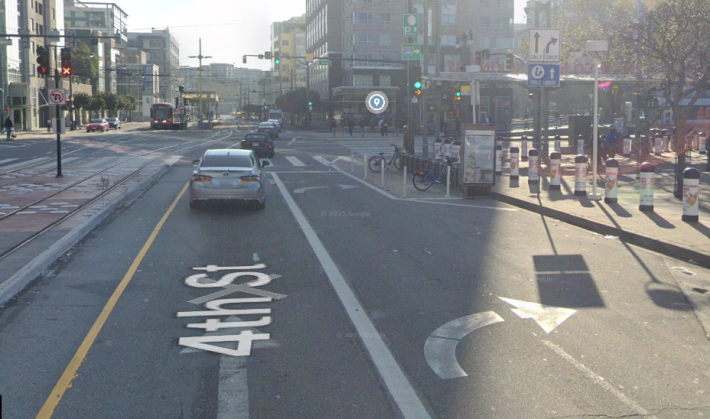
"The number one concern I heard from members and advocates on this project was crossing Masonic at Oak–this design creates full signal separation for people walking and biking which protects them from people in cars turning left, and adequately addresses that concern," opined Clyde.
Nevertheless, from Streetsblog's view, it seems strange that SFMTA would add a new double-turn lane anywhere in the city regardless of the traffic signals—not to mention using a bike safety project to do it. It's puzzling too that the SFMTA board didn't veto this design element, which seems outside the scope of a bike lane.
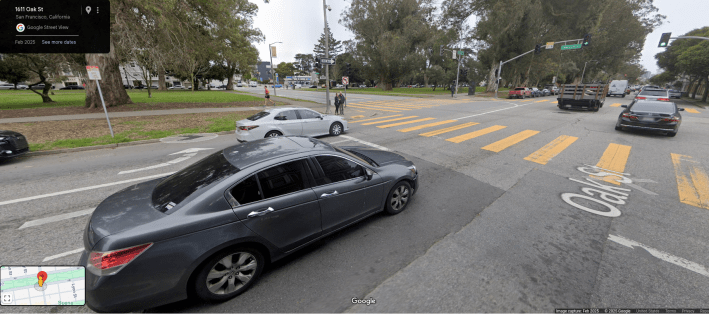
It bears repeating that the overall project is certainly welcome. Its importance is clear from the collision stats: Fell Street, which got a similar treatment five years ago, had a 38 percent drop in total collisions and a 50 percent drop in pedestrian crashes. Over the same period, there was an increase in collisions on Oak Street.
"The Oak Street Quick-Build Project will make it safer and faster for people to use bikes for transportation, which will lead to more people shifting trips from cars to bikes and decrease car traffic and demand for car parking," wrote Bornheimer. "These are the types of infrastructure improvements that Mayor Lurie and SFMTA should be fast-tracking on every street."
Still, throwing in an additional turning pocket for cars should be a non-starter. If SFMTA proposed paving over part of the Panhandle to make another car turning lane, people would rightfully freak out.
In effect that's what they're doing, while hiding it (and the additional expense) in this bike lane project. Roccaforte defends the move, writing that the bike lane will be in a narrow section of the Panhandle "that Rec & Park finds challenging to maintain." But there's no denying that adding a double-turn lane is going to result in a crossing at Masonic that is not as safe as it could be. The upgraded traffic signals not withstanding, that's likely to lead to another tragedy at some point in the future.


